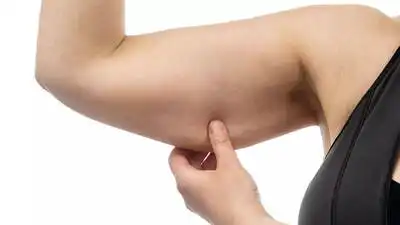Many people dream of losing fat from specific parts of their bodies — the belly, arms, thighs, or even under the chin. The idea of being able to shape your figure with targeted exercises is tempting, especially for those who struggle with stubborn fat in certain areas. This concept, often referred to as “spot reduction,” suggests that exercising a particular body part can lead to fat loss in that exact location. From crunches for abs to tricep dips for arms, countless workouts promise localized results. But is this method truly effective? In this article, we explore the science behind spot reduction and whether it’s possible to lose fat from just one area of your body.
What is spot reduction or targeted fat loss
Spot reduction refers to the belief that you can lose fat from a specific area of your body by exercising that part alone. For example, someone might do hundreds of sit-ups hoping to reduce belly fat. While this approach is widely popular in fitness circles, scientific evidence supporting it is limited. Spot reduction focuses more on isolating muscle groups rather than encouraging overall fat burn. This has led many to chase visible changes in isolated areas without fully understanding how fat loss actually works.
Video
What research says about fat loss from a specific body part
Most scientific studies have shown that spot reduction doesn’t work. In one study, participants did abdominal exercises for six weeks but saw no decrease in belly fat. Another study involved participants doing arm-only resistance exercises. Although they gained muscle, the fat loss was evenly distributed across the body — not just in the trained arm. A few small studies have hinted at possible localized fat loss, but those findings were either limited in scope or inconsistent. Overall, the evidence strongly suggests that exercising one area alone won’t burn fat specifically from that location.
Why people want targeted fat loss
The appeal of spot reduction makes sense. Many people struggle with excess fat in particular areas, such as the waist, thighs, arms, neck, or face. A defined jawline or a thinner neck, for instance, is often associated with a more youthful or sculpted appearance. These areas can feel frustrating when the rest of the body appears leaner. Genetics, age, gender, and hormones all affect how and where your body stores fat. In women, fat tends to gather in the hips and thighs, while men more often gain around the midsection. As a result, many people are drawn to exercises that promise fast, visible changes in these stubborn spots.
How fat loss actually works
Fat loss doesn’t happen in isolated areas. Instead, when your body needs energy, it breaks down stored fat — called triglycerides — into fatty acids and glycerol. These are released into the bloodstream and used as fuel during activity. This process happens throughout the entire body, not just in the muscle you’re working. So even if you’re targeting your arms or belly with specific exercises, the fat your body uses for energy could be coming from anywhere. In short, fat loss is a systemic process, not a localized one.
Spot reduction vs targeted toning
While spot reduction isn’t effective for fat loss, targeted exercises can help tone and define muscles in a specific area. For example, doing squats can strengthen your glutes and thighs, while push-ups can build chest and arm definition. However, if there’s a layer of fat covering these muscles, they won’t be visible until overall fat is reduced. This is why pairing muscle-toning exercises with cardio and strength training for the whole body is the best approach. You can build muscle where you want it, but fat loss must happen at the systemic level.
How to effectively lose fat and tone your body
Rather than focusing on one body part, try these proven strategies to reduce body fat and improve muscle tone across your entire body:
- Cardiovascular exercise: Activities like running, swimming, or cycling help burn calories and are especially effective at reducing overall body fat.
- High-intensity interval training (HIIT): HIIT combines bursts of intense movement with short rest periods, maximizing calorie burn in less time.
- Strength training: Lifting weights or using resistance bands builds muscle, which increases your metabolism and helps with long-term fat loss.
- Whole-body movements: Exercises like burpees, jumping jacks, or mountain climbers engage multiple muscle groups at once.
- Consistency: Sticking to a regular workout routine is key to seeing sustainable results over time.
Even low-impact activities such as walking and swimming can contribute significantly to fat loss if done consistently.
The importance of diet for fat loss
Exercise alone is often not enough. Your diet plays a critical role in reducing body fat. Even intense workouts can’t outdo the effects of poor eating habits. For best results:
- Control portions: Eat mindfully and avoid oversized servings.
- Prioritize fiber: Vegetables, fruits, legumes, and whole grains help you stay full longer.
- Choose lean proteins: Eggs, chicken, fish, and tofu support muscle repair and curb hunger.
- Limit added sugars and processed foods: These contribute to weight gain and can sabotage your efforts.
- Stay hydrated: Sometimes thirst is mistaken for hunger, leading to unnecessary snacking.
